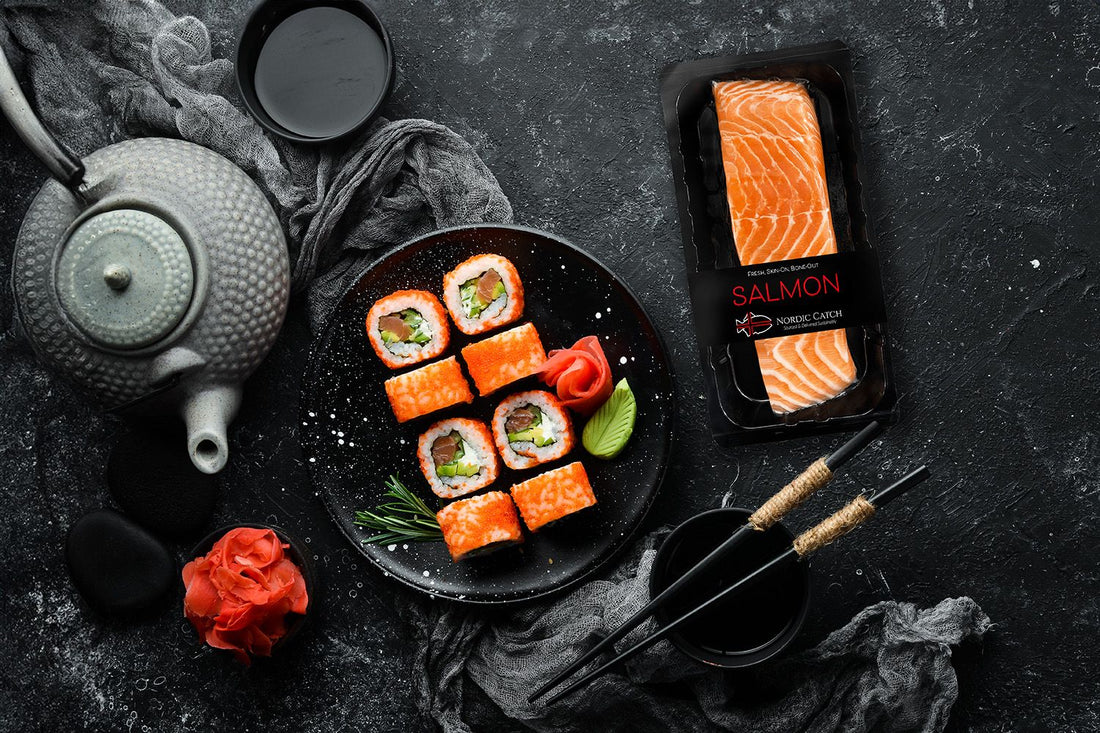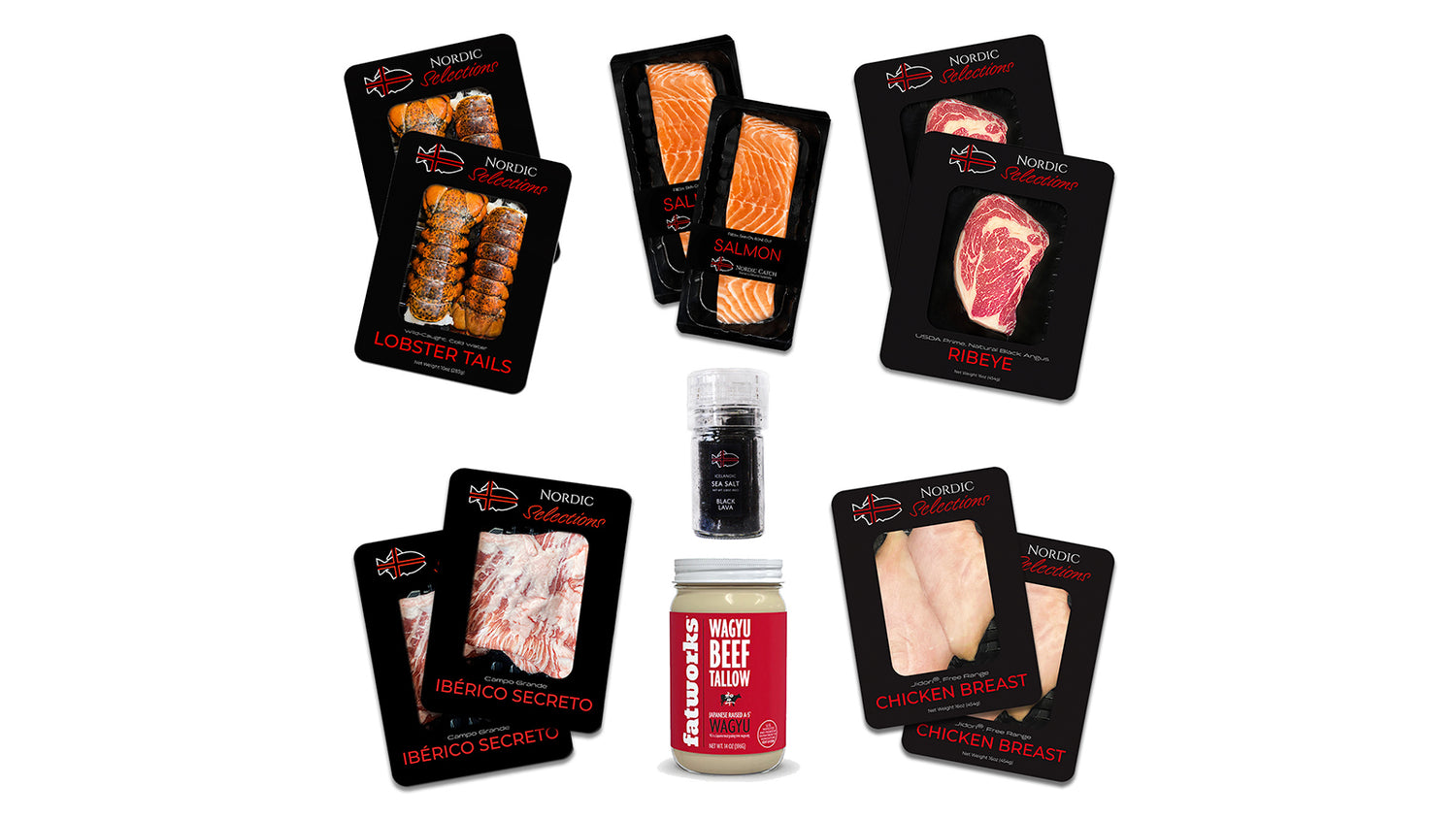
Atlantic Salmon vs. Alaskan Salmon: Which One is Better?
When you choose salmon, the options can be overwhelming. Atlantic salmon and Alaskan salmon are both famous. Still, they differ in crucial ways that impact their taste, nutrition, and sustainability. Suppose you’re wondering whether you should choose Atlantic or Alaskan salmon ahead of your subsequent bulk fresh seafood delivery. In that case, we’ll break down the differences to help you make a more informed decision for your next meal.
Atlantic Salmon vs. Alaskan Salmon: What’s the Difference?
The main difference between Atlantic and Alaskan salmon is where they come from. Additionally, Atlantic salmon is primarily farmed, while Alaskan salmon is wild-caught. This distinction influences everything from the fish’s taste and texture to its nutritional value and environmental impact.
Characteristics of Atlantic Salmon vs. Wild Alaskan Salmon
|
Aspect |
Atlantic Salmon |
Wild Alaskan Salmon |
|
Cultivation Process |
Farmed |
Wild Caught |
|
Nutritional Profile |
Thinner filets, lower fat, and omega-3 content |
Higher fat content, more omega-3, heart-healthy benefits |
|
Environmental Impact |
Prone to parasites and adverse effects on wild populations |
Caught in natural habitat, minimal contamination risk |
|
Taste and Texture |
Milder flavor, softer texture |
Richer, meaty flavor, firmer texture |
Let's dive deeper into the key differences between these two types of salmon.
Cultivation Process: Farmed Atlantic vs. Wild-Caught Alaskan Salmon
The main difference between wild-caught vs. farm-raised fish is how they're raised. Atlantic salmon are farmed in controlled environments, often exposed to chemicals, antibiotics, and parasites, which affect their health and the surrounding ecosystem. They are typically fed a grain-based diet to accelerate growth, resulting in a milder flavor.
In contrast, wild Alaskan salmon is caught in the clean, cold waters of Alaska, where it feeds on a natural diet of krill, plankton, and small fish, contributing to its rich flavor and superior nutritional profile. This wild environment ensures a cleaner, healthier fish free from chemicals.
Atlantic vs. Alaskan Salmon: Nutritional Value
Salmon is one of the market's healthiest seafood options and one of the most popular seafoods in the US. When you compare the nutritional benefits of Atlantic and wild Alaskan salmon, wild Alaskan salmon takes the lead. Alaskan salmon, especially varieties like Sockeye and King, contain omega-3 fatty acids crucial for heart health, brain function, and inflammation reduction. Wild-caught Alaskan salmon typically provides between 1.5 and 2g of omega-3s per 100g, giving it a nutritional edge.
In contrast, farm-raised Atlantic salmon contains fewer omega-3s due to its controlled diet, around 0.4-1g per 100g. Atlantic salmon also has a higher omega-6 to omega-3 ratio, which can be less beneficial when consumed in large amounts. The higher fat content in Atlantic salmon results from its rich diet, giving it a milder, butterier flavor and raising its calorie count.
Atlantic or Alaskan Salmon: Which Tastes Better?
The flavor and texture of Atlantic and Wild Alaskan salmon are different; it all comes down to what you're looking for. Wild Alaskan salmon has a firm, meaty texture and a rich, bold flavor from its natural diet. Sockeye salmon has a deep, vibrant color and a pungent taste. In contrast, King salmon is buttery and slightly milder. It still offers a luxurious richness due to its higher fat content. Wild Alaskan salmon tends to be leaner, making it less oily and more delicate in flavor.
On the other hand, Atlantic salmon offers a milder, softer texture and a more delicate flavor. It's often described as buttery and less fishy, making it ideal for those who prefer a more subtle taste. This flavor is mainly due to its grain-based diet, which lacks the nutrient-dense, ocean-based foods that give wild salmon its distinctive flavor.
Atlantic salmon is often the go-to choice if you love salmon sashimi or smoked salmon. It's readily available year-round and maintains a consistent, high-quality standard due to its farm-raised nature.
Which Is More Sustainable: Atlantic or Alaskan Salmon?
When deciding between Atlantic and Alaskan salmon, think about their environmental impact. Farmed Atlantic salmon may harm ecosystems through pollution, disease outbreaks, and escapes, which affect wild populations. The use of antibiotics and chemicals in farming also raises contamination concerns.
Wild Alaskan salmon, on the other hand, thrive in Alaska's pristine waters, where strict regulations promote sustainability and responsible fishing practices. With low industrialization and a strong focus on conservation, Alaskan salmon offers an eco-friendlier option.
Which Is Better for Your Health: Atlantic or Alaskan Salmon?
Atlantic salmon may be more prone to contamination. Due to the dense farming conditions, farmed salmon is at a higher risk for parasites and diseases, which can lead to elevated levels of harmful substances like PCBs, dioxins, and mercury. When consumed frequently, these toxins can accumulate in the fish and pose health risks.
Wild Alaskan salmon, on the other hand, is much less likely to carry these contaminants. Since it's caught in its natural habitat, it feeds on a cleaner, more natural diet. It isn't exposed to the chemicals often found in farmed environments. As a result, Alaskan salmon has lower levels of PCBs (polychlorinated biphenyls), mercury, and dioxins, making it a healthier option overall.
|
Contaminant |
Farmed Atlantic Salmon (µg/kg) |
Wild Sockeye Salmon (µg/kg) |
|
Mercury |
47.9 |
5.6 |
|
PCBs |
33 |
2.6 |
|
Dioxins |
0.29 |
0.05 |
Simply put, 1 µg/kg means that for every kilogram of salmon, there is one microgram (one millionth of a gram) of the contaminant. This unit helps compare the contamination levels between different types of fish or other substances in a standardized way.
Cooking Tips: How to Prepare Atlantic vs. Alaskan Salmon
Wild Alaskan salmon is leaner than Atlantic salmon, so it cooks faster and at lower temperatures. When grilling or pan-searing it, cook wild Alaskan salmon for about 4-6 minutes per side or 10-12 minutes at 375°F when baking it. This helps preserve its delicate texture and prevents it from drying out.
Atlantic salmon has a higher fat content, which allows it to withstand longer cooking times and higher temperatures. To keep it moist and tender, cook Atlantic salmon for 6-8 minutes per side when grilling or pan-searing or 12-15 minutes at 375°F when baking. Learn the best ways to cook salmon to prepare the ultimate dish at home.
Frequently Asked Questions
Is wild or Atlantic salmon better?
Wild salmon is generally better than farmed Atlantic salmon because it is leaner, contains fewer contaminants, and has a higher omega-3 to omega-6 ratio.
Which type of salmon is healthiest?
Wild-caught salmon, especially varieties like Sockeye and King, is the healthiest option due to its higher omega-3 content, lower fat, and minimal contaminant exposure.
Why is it better to eat wild salmon?
Eating wild salmon is better because it's free from the chemicals, antibiotics, and artificial coloring often used in farmed salmon, offering a cleaner and more nutritious option.
What's better, Atlantic or Pacific salmon?
Pacific salmon is generally better than farmed Atlantic salmon due to its natural diet, cleaner environment, and higher nutritional value.

